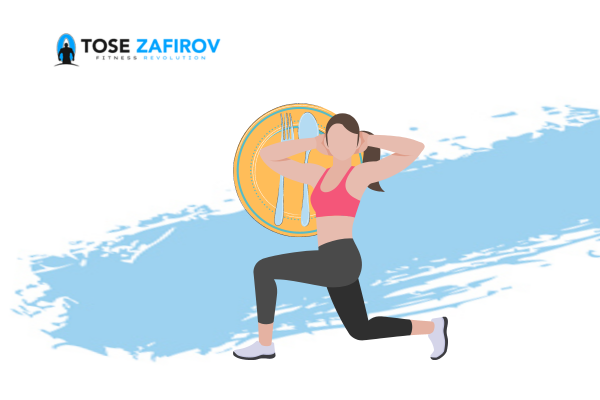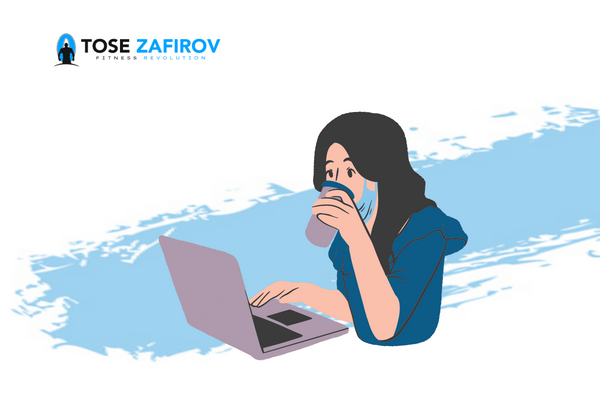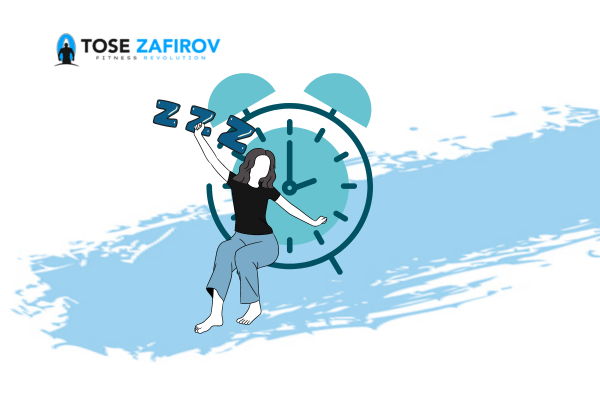To get the most out of your workouts, provide your body with the carbohydrates it needs for energy and the protein it needs to build muscle. If you don’t feed your body properly, the endurance and strength you want to achieve can easily be lost. concentration is actually the fuel in the car that will keep you moving to reach your destination.
There are certain best foods to eat before working out that will help our bodies prepare, and which can maximize your efforts in the gym. While we all have different nutritional requirements, these known foods – which are the perfect balance of fats, carbs, and protein – can fuel your body, stave off hunger, fight fatigue, and even aid recovery. So what is a good pre-workout food?
Key Takeaways:
- Fuel for Performance: Providing your body with the right mix of carbohydrates and protein
- Optimal Nutrient Balance: Discover the power of consuming foods
- Customized Approach: While nutritional needs vary, incorporating pre-workout foods that align with your body’s requirements can significantly enhance your gym efforts.
Why Eat Before A Workout?
The main goal of a pre-event/workout meal is to replenish glycogen, the short-term storage form of carbohydrate. This supplies immediate energy needs and is crucial for morning workouts, as the liver is glycogen depleted from fueling the nervous system during sleep. The muscles, on the other hand, should be glycogen-loaded from proper recovery nutrition the previous day.
The body does not need a lot, but it needs something to prime the metabolism, provide a direct energy source, and allow for the planned intensity and duration of the given workout. But what is that something? That choice can make or break a workout. It is a good idea to experiment with several pre-exercise snacks/meals and stick with the few that work best under given circumstances.
General Pre-Workout Foods:
1. Bananas
Known as nature’s power bar, bananas are packed with carbohydrates and potassium, which supports nerve and muscle function. Carbs are fuel for our body and brain, and they account for 90% of banana calories.
2. Oats
Because they are full of fiber, oats release carbohydrates gradually. Due to this slow release, energy levels are kept consistent throughout your workout, meaning you can train harder for longer. They also contain Vitamin B, which helps convert carbohydrates into energy. Irish oats are often considered the best, as they are the least processed type and boast a lower glycemic load than quick-cooking and instant oats. So, keep a look out the next time you go shopping.
3. Grilled Chicken, Broccoli, And Sweet Potato
If you are working on building muscle mass or plan to hit circuit training hard, then this combo is a must-try. Although it is more of a meal than a snack, there’s a reason pro-athletes chow down on this regularly – and we think it’s time you gave it a go.
4. Dried Fruit
For a quick, easy and good pre-workout food, fix yourself some dried berries, apricots, figs, and pineapple. Dried fruits are a good source of simple carbohydrates that are easily digestible – so grab a handful.
5. Whole Grain Bread
One slice of whole grain bread is an excellent source of carbs. Add some hard-boiled eggs for a protein-packed snack, or some low-fat turkey.
5. Fruit And Greek Yogurt
This is a killer combo. The fruit is full of carbohydrates while Greek yogurt packs a protein-filled punch. Compared to regular yogurt, Greek yogurt has almost double the protein, fewer carbs, and half the sodium. Why do they go together? The carbs in the fruit break down quickly and are used as fuel during your workout, while the protein is stored a little longer and is used to prevent muscle damage, so it really is a perfect pairing.
Top Tip:
Make sure you eat your meal and snack 30-90 minutes before you work out, so you don’t feel bloated. If eating a larger meal, wait the full 90 minutes, but if you’re sticking with a snack, 30 minutes should be fine.
Pro Tip
don’t feel bloated. If eating a larger meal, wait the full 90 minutes, but if you’re sticking with a snack, 30 minutes should be fine.
Pre-Workout Meals For Specific Goals
1. For Bodybuilding
As a bodybuilder, you’re trying to stay lean and build plenty of muscle. Consuming a small meal about an hour before your workout–not a heavy one that will sit lean in your stomach–will help you see the muscle growth you’re looking for. Your small meal should be made up of equal parts lean protein and carbs. Some great ideas include:
- Egg whites
- Whey protein isolate
- Fruit, including oranges, strawberries, or apples
- Brown rice or long-grain white rice
- Oatmeal
- Wheat pasta
- Chicken or turkey
Note that timing and portion control are critical in this pre-workout meal. You want to eat enough to give you energy and fuel your muscles throughout your workout, but you also want to be sure that you’re eating early enough and light enough that your food won’t sit heavy in your stomach, slowing you down throughout your workout. Combining some of the sources of lean protein mentioned above with the quicker-digesting carbohydrates about an hour before your workout will ensure that you get the nutrition punch you need to keep building muscle.
Note
If you ever wondered when to drink protein shakes, before or after workout? If your goal is bodybuilding, a protein shake might be good pre-workout food.
2. For Weight Loss
Exercising for weight loss means maintaining a tricky balance. You want to eat enough to keep fueling your body and give you plenty of energy to complete those demanding workouts, but you don’t want to pack on calories that could prevent you from losing the weight you want to lose. Eating lightly around half an hour before your workout will allow you to head in with maximum energy–and combining a complex carbohydrate with a lean protein is the best way to fuel your body.
Some ideas:
- A banana with nut butter, especially almond butter
- Multigrain crackers with hummus
- An apple with peanut butter or a small handful of nuts
- 1/2 cup pasta or rice, preferably whole grain
- Any whole piece of fruit
- 1/2 cup oatmeal with raisins or berries
Warning
Keep in mind that your goal is to fuel your body through your workout. Fasting cardio won’t have nearly the same results as a properly fueled workout that will drive your success up.
3. For Women’s Health
Women have unique health concerns. They typically don’t burn as many calories per day as men, nor do they have the same workout goals. As a woman, you want to make sure that you’re keeping your calories low while still fueling your workout. You need that same great balance of carbs and protein, but, depending on your workout, you also need to keep the calories low.
Some great pre-workout treats include:
- Fruit smoothies, especially those made with almond milk or another low-calorie option
- Greek yogurt
- Whole fruit
- Lean meat on top of whole grain bread
- 1/2 cup oatmeal sweetened with honey or agave
- 1/2 sweet potato
Note
Finding the right pre-workout combination can be challenging. Once you do, however, you’ll discover that you have more energy and can meet your goals faster.
Hydration is also crucial
Your body needs water to function.
Good hydration has been shown to sustain and even enhance performance, while dehydration has been linked to significant decreases in performance
Pro Tip
It’s recommended to consume both water and sodium before exercise. This will improve fluid balance
Bottom Line:
Learn how essential carbohydrates and protein fuel your energy and muscle-building goals. Tailor your approach, incorporate balanced food choices, and time your meals right to harness the benefits of enhanced endurance, strength, and recovery. Whether you’re aiming for bodybuilding, weight loss, or overall well-being, the right fuel can make all the difference. Remember, hydration is vital too, as it supports performance and overall health. Fuel your body right to achieve your fitness aspirations faster and more efficiently.




